Face-Off: Blur
Here comes the fuzz.
That said, situations where engine load does cause screen-tear are infrequent on both consoles - and actually non-existent on some of the game modes (Checkpoint and Destruction, notably).
Pre-analysis, the impression was that Blur was a solid, v-synced title, and in the case of Blur, that perception effectively overrules our mathematically precise graphs where it matters: in the gameplay experience. Blur tears but you'll require astonishingly good eyesight to notice it when it does, which isn't very often.
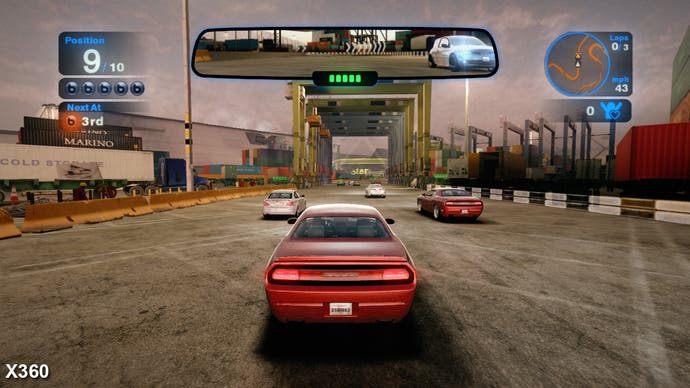


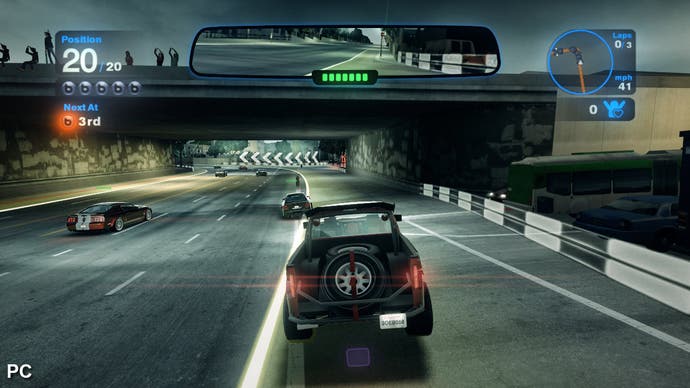
So, with the console versions dealt with, what of the third SKU? In a market where the computer version of the game is often delayed until months after the PS3 and 360 versions, it's great to see Activision unleash the PC build at the same time as the others, and it's well worth checking out.
Bizarre's signature art style really shines in the PC version of Blur. So long as you have the required hardware, you're freed from the 720p30 confines of the console versions and running the game at 1080p60 is a superb experience: the attention to detail that has gone into the models, environments and effects all scale up beautifully on the PC, giving an almost filmic CG-style effect.
It's not quite so obvious in still screens, but here's how Blur on 360 via scaling to 1080p compares with the "real thing" on PC. The Xenos scaler works well with anti-aliased images, and at 4x MSAA the pre-scaled image quality couldn't really be superior. But if your PC is powerful enough, 2.5x the on-screen resolution and double the temporal resolution makes the 1080p60 experience that much better.
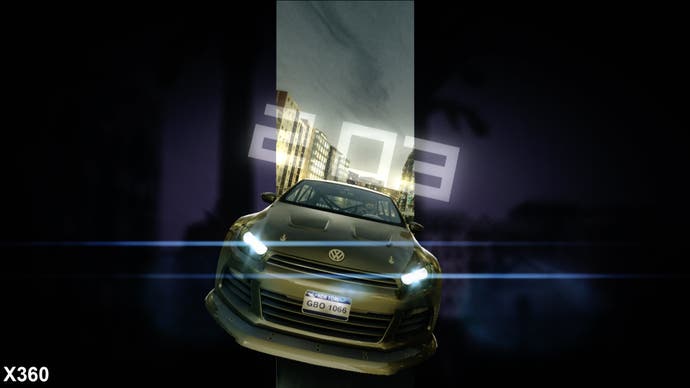
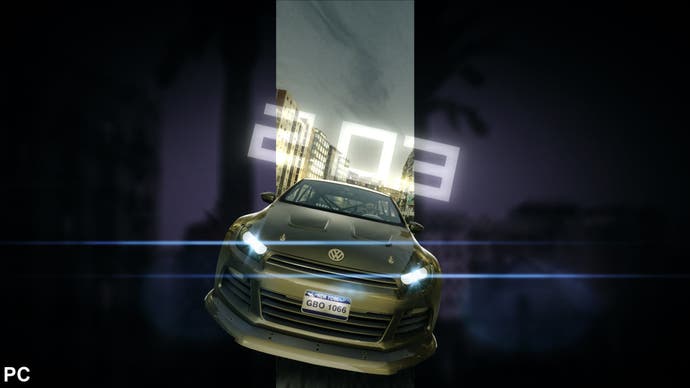
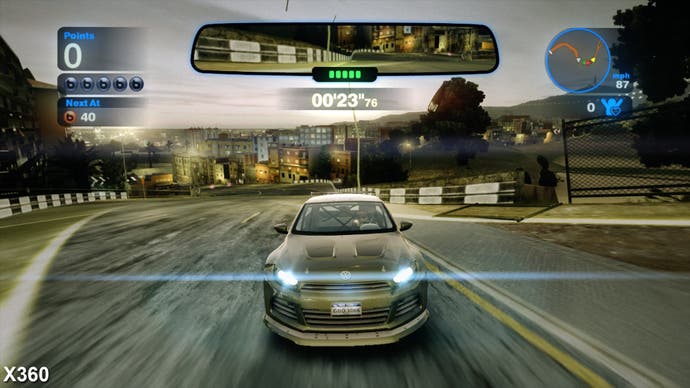

It is fair to say that Blur is pretty resource-intensive. In our i7 system running at max settings, both the GTX275 and GTX280 couldn't sustain 1080p60. Only by wheeling in the awesome, throbbing might of the GTX480 did we achieve the required full HD nirvana - kudos to NVIDIA for supplying the required kit that gives us this experience. See this comprehensive Russian gaming site for a full breakdown on how Blur performs with various GPUs.
You'll need a decent CPU too if you're running at the highest level: a 3.0GHz dual-core chip is recommended generally, but some observers have seen up to 80 per cent CPU load on an overclocked Q9550 quad core in extreme circumstances, so clearly having a quad installed is a really good idea.



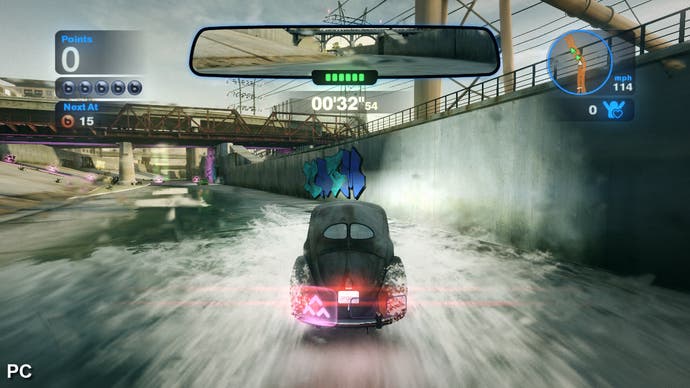
One thing worth pointing out, however, is that in many senses "max everything" really is overkill, so it's a bit of a shame that those benchmarks exclusively deal with the absolute highest-quality settings. Aside from anti-aliasing levels (up to 8xMSAA), there are essentially three different graphics levels, and even the lowest level is still a good-looking experience.
Bizarre has worked well in dialling back the load without severely impacting the look of the game. However, in weighing up a purchasing decision, the fixed spec of console guarantees you a set performance level, so in that sense it is the safer purchase compared to the PC version, if you don't have a top-spec machine.
As it happens, for those running high-end PCs and looking for the technical cutting edge, Blur compares very favourably with Split/Second: Velocity, which features no anti-aliasing in its PC iteration and (amazingly) is capped at 30FPS, regardless of how much processing power you throw at it.
That said, the inclusion of a frame-rate limiter in Blur would have been welcome. This is a game designed to be run with a solid frame-rate. If you can get it running at a sustained 60 then it achieves a new level, but if you can't then the fluctuating frame-rate can be a touch off-putting and having the option to lock at 30 would have been welcome.
Blur is simply magnificent on all platforms. If you've got the power on tap, the PC undoubtedly offers the ultimate incarnation of the game. In terms of the consoles, Bizarre hasn't just bested the 360-only Project Gotham Racing 4 from a technical perspective, it's also managed to do it on a cross-format project while achieving a remarkable level of platform parity.
Xbox 360 has that beautiful 4x MSAA which suits the art style of Bizarre perfectly, and thus commands a small premium over the 2x MSAA/blur combo used in the PS3 build. For its part, the Sony platform has support for all of Sony's proffered surround sound options, and many might value that advantage instead.
Both are equally superb to play, offering an overall experience and quality level that surpasses many first-party console exclusives. Great stuff.
Check out Eurogamer's Blur review elsewhere on the site. The game's out today for PC, PS3 and Xbox 360.







